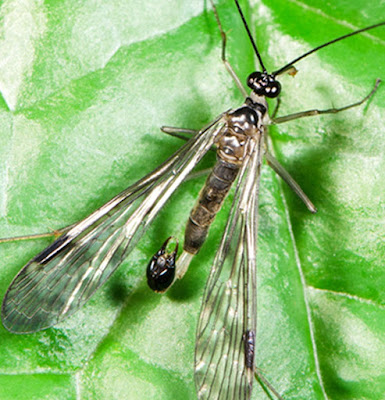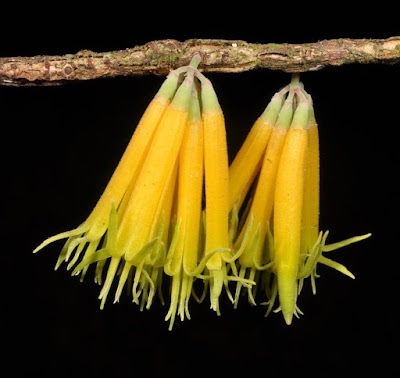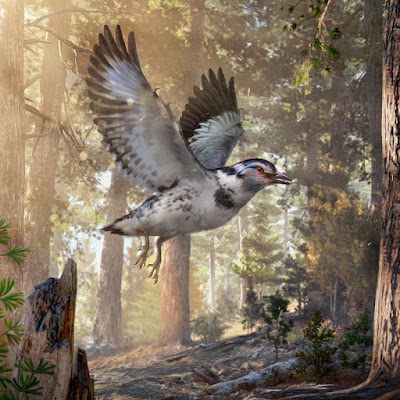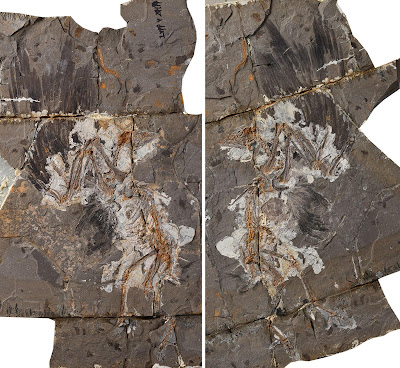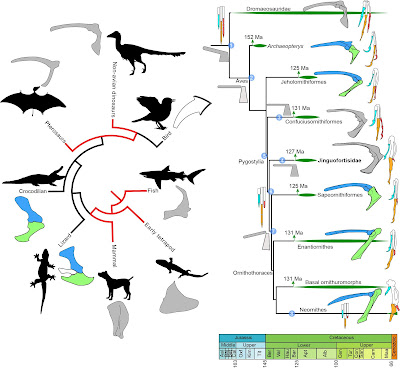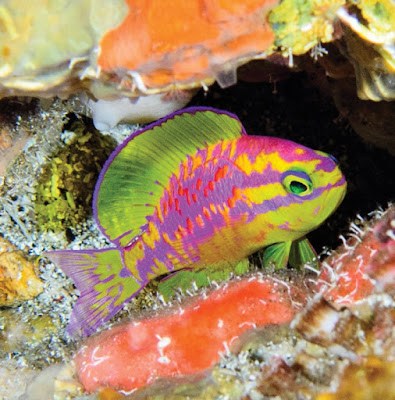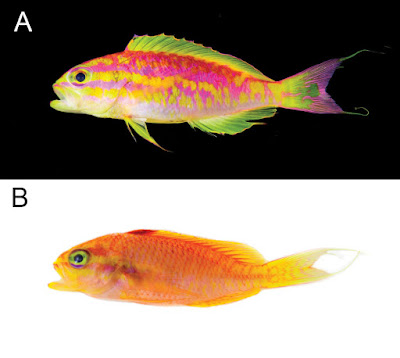[Most Recent Entries] [Calendar View]
Tuesday, September 25th, 2018
| Time | Event | ||||||
| 4:16a | [Entomology • 2018] High Species Diversity of the Genus Neopanorpa (Mecoptera: Panorpidae) in Yunnan Province, China
Abstract Neopanorpa van der Weele, 1909 is the second largest genus of Panorpidae, and is endemic to the Oriental Region. Yunnan, a province in the southwestern region of China, is well-known as a biodiversity hotspot and abundant in Neopanorpa species. However, only sixteen species of Neopanorpa have been described from Yunnan hitherto and the taxonomic study of Neopanorpa in Yunnan has lagged far behind as compared with studies performed in neighboring regions. In the present study, notably high diversity of Neopanorpa species is found in the Hengduan Mountains of Yunnan. Seven species of Neopanorpa are described as new: Neopanorpa semiorbiculata, N. tincta, N. triangulata, N. diancangshanensis, N. magnatitilana, N. longistipitata, and N. quadristigma spp. n. Neopanorpa spatulata Byers, 1965, originally described from Thailand, is recorded from China for the first time. Neopanorpa dimidiata Navás, 1930 is a synonym of N. brisi (Navás, 1930). Keys to species of Neopanorpa in Yunnan are provided. The phylogenetic relationships of Neopanorpa species from the Hengduan Mountains, the Indochinese Peninsula, and the eastern Himalayas are briefly discussed. Keywords: Mecoptera, taxonomy, Insecta, China, Oriental Region, fauna
Meng Wang and Bao-Zhen Hua. 2018. High Species Diversity of the Genus Neopanorpa (Mecoptera: Panorpidae) in Yunnan Province, China. Zootaxa. 4483(1); 36–66. DOI: 10.11646/zootaxa.4483.1.2 | ||||||
| 1:31p | [Botany • 2018] Miconia rheophytica (Melastomataceae: Miconieae) • A New and Endangered Species from the Magdalena Medio Region of Colombia
Abstract Miconia rheophytica is described, illustrated, and compared with presumed relatives in the Octopleura clade. It is distinguished by its narrowly elliptic to ovate-lanceolate leaf blades with entire to subentire margins that have evenly spaced spreading smooth eglandular trichomes 0.8−1.4 mm long, an indumentum of dendritic trichomes with short axes and terete radiating arms on distal internodes, adaxial petiole surfaces, and primary and secondary veins on abaxial leaf surfaces, unribbed hypanthia that are constricted and tapered distally below the torus and covered with a mixture of basally roughened trichomes and dendritic trichomes with short axes, anthers with two ± truncate apical pores, eglandular anther appendages, 3-locular ovary, and berries that are bright blue at maturity. It is known only from flash-flooded riverbanks in three river canyons in the Magdalena Medio region of Antioquia, Colombia. A conservation assessment of “Endangered” is recommended for this species based on IUCN Red List Categories and Criteria. Keywords: Andes, rheophyte, endangered species, neotropics, Octopleura clade, Eudicots Miconia rheophytica Posada‒Herrera & Almeda, sp. nov. Type:— COLOMBIA. Antioquia: Municipio de San Luis, río Samaná Norte, 2 km abajo del puente de la carretera Medellín‒Bogotá. ..., 430 m, 18 diciembre 2016 (fl, fr), S. E. Hoyos-Gómez 3105 (holotype: HUA!). Figs. 1, 2. Diagnosis: Unusual and unique among species of the Octopleura clade in being rheophytic and in having a combination of narrowly elliptic to ovate-lanceolate leaf blades with entire to subentire margins that have evenly spaced spreading smooth eglandular trichomes 0.8−1.4 mm long, unribbed hypanthia covered with a mixture of basally roughened trichomes and dendritic trichomes with short axes, anthers with two ± truncate apical pores, eglandular anther appendages, 3-locular ovary, and berries that are bright blue at maturity. .... Distribution and habitat:— Miconia rheophytica appears to be largely restricted to the Magdalena Medio region of Colombia where it is known only from the Department of Antioquia (Fig. 3). It grows along rocky banks of Río Nechí, and in the Río Samaná Norte and Río Claro river canyons in the municipalities of Anorí and San Luis at elevations of 110−600 m. Etymology:— The specific epithet is derived from the word rheophyte, a plant that grows along margins of fast moving river currents with frequent flooding. This is an environment that is particularly harsh for many organisms. Juan Mauricio Posada-Herrera and Frank Almeda. 2018. Miconia rheophytica (Melastomataceae: Miconieae), A New and Endangered Species from the Magdalena Medio region of Colombia. Phytotaxa. 371(1); 55–61. DOI: 10.11646/phytotaxa.371.1.7 | ||||||
| 1:53p | [Botany • 2018] Amyema lisae (Loranthaceae) • A New Species from Negros Island, the Philippines
Abstract Our recent fieldwork in the island of Negros, Philippines resulted in the discovery of a species new to science, Amyema lisae (Loranthaceae), and a new record for the Philippines, Gastrodia sabahensis (Orchidaceae), which we describe and report here. Amyema lisae differs from similar species with verticillate phyllotaxy and inflorescences of simple umbels by having relatively smaller leaves and 5-merous flowers that are yellow and tomentose. This new species is named in honor of Lisa J. Paguntalan, a champion of biodiversity conservation in the Philippines. In the same island, we also collected Gastrodia sabahensis, previously only known to occur in Borneo. Our specimens differ from typical plants of this species by having larger flowers with column bases that are slightly broader and stelidia that are broad with blunt apices. Keywords: Balinsasayao - Twin Lakes Natural Park, Gastrodia verrucosa complex, mistletoe, Northern Negros Natural Park, parasitic plant, taxonomy, Eudicots Pieter B. Pelser, Shiella Mae B. Olimpos, Peter O'Byrne and Julie F. Barcelona. 2018. A New Species of Amyema (Loranthaceae) and A New Gastrodia (Orchidaceae) Record for the Philippines from Negros Island. Phytotaxa. 371(1); 25–32. DOI: 10.11646/phytotaxa.371.1.3 New mistletoe species found only in Negros Oriental named after Philippine wildlife biologist t.co/tpC5Jp9n0g @cebudailynews | ||||||
| 3:03p | [PaleoOrnithology • 2018] Jinguofortis perplexus • A New Clade of Basal Early Cretaceous Pygostylian Birds and Developmental Plasticity of the Avian Shoulder Girdle
Significance We report the second most basal clade of the short-tailed birds (Pygostylia) from the Early Cretaceous. The new family Jinguofortisidae exhibits a mosaic assembly of plesiomorphic nonavian theropod characteristics, particularly of the fused scapulocoracoid and more derived flight-related features, further increasing the known ecomorphological diversity of basal avian lineages. We discuss the evolution of the scapula and coracoid in major tetrapod groups and early birds and hypothesize that the fused scapulocoracoid in some basal avian lineages, although rare, results from an accelerated rate of ossification and that the avian shoulder girdle likely was transformed by developmental plasticity along an evolutionary lineage leading to the crown group of birds. Abstract Early members of the clade Pygostylia (birds with a short tail ending in a compound bone termed “pygostyle”) are critical for understanding how the modern avian bauplan evolved from long-tailed basal birds like Archaeopteryx. However, the currently limited known diversity of early branching pygostylians obscures our understanding of this major transition in avian evolution. Here, we describe a basal pygostylian, Jinguofortis perplexus gen. et sp. nov., from the Early Cretaceous of China that adds important information about early members of the short-tailed bird group. Phylogenetic analysis recovers a clade (Jinguofortisidae fam. nov.) uniting Jinguofortis and the enigmatic basal avian taxon Chongmingia that represents the second earliest diverging group of the Pygostylia. Jinguofortisids preserve a mosaic combination of plesiomorphic nonavian theropod features such as a fused scapulocoracoid (a major component of the flight apparatus) and more derived flight-related morphologies including the earliest evidence of reduction in manual digits among birds. The presence of a fused scapulocoracoid in adult individuals independently evolved in Jinguofortisidae and Confuciusornithiformes may relate to an accelerated osteogenesis during chondrogenesis and likely formed through the heterochronic process of peramorphosis by which these basal taxa retain the scapulocoracoid of the nonavian theropod ancestors with the addition of flight-related modifications. With wings having a low aspect ratio and wing loading, Jinguofortis may have been adapted particularly to dense forest environments. The discovery of Jinguofortis increases the known ecomorphological diversity of basal pygostylians and highlights the importance of developmental plasticity for understanding mosaic evolution in early birds. Keywords: bird, development, Mesozoic, plasticity, phylogeny
Systematic Paleontology Aves Linnaeus, 1758 Pygostylia Chiappe, 2002 Jinguofortisidae fam. nov. Jinguofortis perplexus gen. et sp. nov. Holotype: A complete and articulated skeleton with feathers is housed at the Institute of Vertebrate Paleontology and Paleoanthropology (IVPP) under the collect number IVPP V24194 (Fig. 1 and SI Appendix, Figs. S1–S7 and Table S1). Etymology: The generic name is derived from “jinguo” (Mandarin), referring to female warrior, and “fortis”, Latin for brave; the specific name is derived from Latin “perplexus,” referring to the combination of plesiomorphic and derived characters present in the holotype specimen. Locality and Horizon: IVPP V24194 was collected near the village of Shixia, Weichang County, Hebei Province, China; Lower Cretaceous Dabeigou Formation of the Jehol Biota (127 ± 1.1 Ma).
Min Wang, Thomas A. Stidham and Zhonghe Zhou. 2018. A New Clade of Basal Early Cretaceous Pygostylian Birds and Developmental Plasticity of the Avian Shoulder Girdle. PNAS. DOI: 10.1073/pnas.1812176115 Min Wang, Xiaoli Wang, Yan Wang and Zhonghe Zhou. 2016. A New Basal Bird from China with implications for Morphological Diversity in Early Birds. Scientific Reports. 6: 19700. DOI: 10.1038/srep19700 Chinese Cretaceous fossil highlights avian evolution eurekalert.org/e/8pkg via @EurekAlert | ||||||
| 3:12p | [Ichthyology • 2018] Tosanoides aphrodite • A New Species (Perciformes, Serranidae, Anthiadinae) from Mesophotic Coral Ecosystems of St. Paul’s Rocks, Mid Atlantic Ridge
Abstract During a recent expedition to St. Paul’s Rocks, Atlantic Ocean, a distinctive and previously unknown species of Anthiadinae was collected at a depth of 120 m. A genetic analysis indicated the undescribed species is a member of the genus Tosanoides, which was only known to occur in the Pacific Ocean. This new taxon is distinguishable from all other Tosanoides species by the following combination of characters: soft dorsal fin rays 15–16; anal fin rays 9; ventral scale rows 9–10; last dorsal spine the longest (instead first through fourth). Here Tosanoides aphrodite sp. n. is described and illustrated, only known from St. Paul’s Rocks. Keywords: Brazil, coral reefs, deep reefs, fish endemism, oceanic island, rebreather diving
Tosanoides aphrodite sp. n. Diagnosis: The new species differs from all other Anthiadinae by the following combination of characters: Dorsal-fin spines X; last dorsal spine the longest, 1.8–2.2 in head length; dorsal-fin rays 15–16; 7th dorsal ray the longest, 2.65–2.80 in head length; anal-fin rays 9; pored lateral-line scales 32–35; ventral scale rows 9–10; body slender and compressed, greatest depth 2.96–3.18 in SL, and the width 1.77–2.09 in depth. Our phylogenetic analysis shows the new species belongs to Tosanoides Kamohara 1953, from which it differs of the other known species by: a divergence of at least 12.35% at the cytochrome oxidase I gene, last dorsal spine the longest (instead first through fourth), fewer dorsal-fin rays (15–16 vs. 16–17), and more anal-fin rays (9 vs. 8 in the other Tosanoides). ....
Etymology: The name “aphrodite” refers to the ancient Greek goddess of love and beauty. While we were collecting the Aphrodite anthias, a large Six-gill shark (Hexanchus griseus) came very close to both of us (HTP and LAR), but that didn’t divert our attention from the new exquisitely beautiful species, and we never even saw the shark (youtu.be/pSZrmoEwR0Q). The beauty of the Aphrodite anthias enchanted us during its discovery much like Aphrodite’s beauty enchanted ancient Greek gods. Distribution and habitat: Tosanoides aphrodite is only known from Saint Paul’s Rocks, off Brazil. It was found on mesophotic coral ecosystems of the island, observed between 100 and 130 m depth while rebreather diving, and a single observation at 260 m depth, taken from a submersible dive. The species inhabits small crevices of complex rocky reefs (Figure 4). The ambient seawater temperature at the collecting depth (~ 120 m) varied between 13 and 15 °C during the two-week period we stayed in the area. Hudson T. Pinheiro, Claudia Rocha and Luiz A. Rocha. 2018. Tosanoides aphrodite, A New Species from Mesophotic Coral Ecosystems of St. Paul’s Rocks, Mid Atlantic Ridge (Perciformes, Serranidae, Anthiadinae). ZooKeys. 786: 105-115. DOI: 10.3897/zookeys.786.27382 |
| << Previous Day |
2018/09/25 [Calendar] |
Next Day >> |
